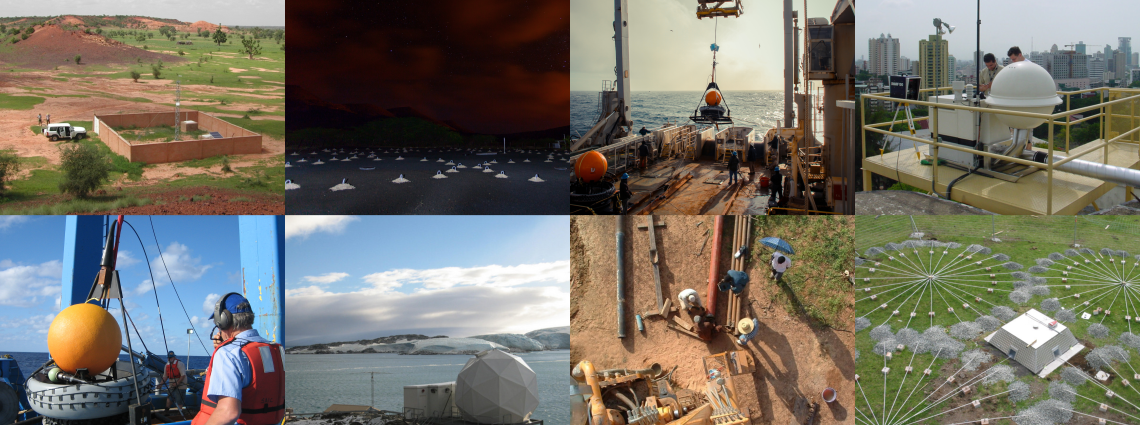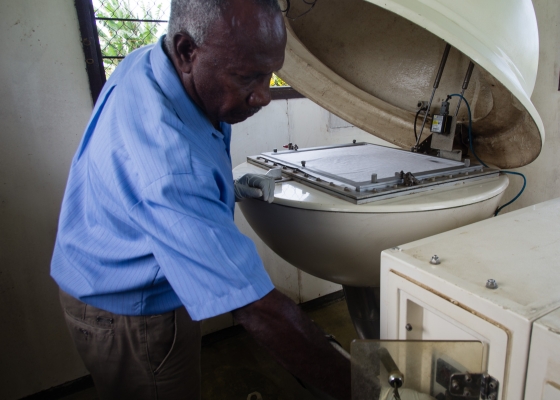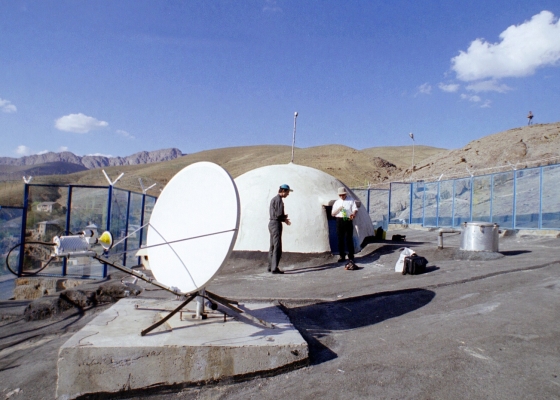The International Monitoring System
A unique global monitoring network
The International Monitoring System (IMS) is a unique global network that, when complete, will consist of 321 monitoring stations and 16 laboratories hosted by 89 countries around the globe. Around 90 percent of these 337 facilities are already up and running, providing a steady flow of real-time data.
The system has already proved its effectiveness, detecting all six of North Korea’s declared nuclear tests between 2006 and 2017. In addition to this, it continuously picks up a wide range of phenomena including earthquakes, volcanic eruptions and meteor strikes, as well as non-nuclear explosions such as the blast that devastated Beirut in 2020.
IMS locations include some of the world’s most remote and inhospitable environments, posing engineering challenges unprecedented in the history of arms control.
Four complementary technologies
The IMS uses four complementary verification methods, using the latest available technology:
-
Fifty primary and 120 auxiliary seismic stations to monitor for an underground test by measuring shockwaves through the ground.
-
Eleven hydroacoustic stations to detect soundwaves through the ocean from an underwater explosion.
-
Sixty infrasound stations to listen for ultra-low-frequency sound waves moving through the atmosphere at levels inaudible to the human ear.
-
Eighty radionuclide stations to detect radioactive particles or gases from atmospheric explosions, or vented by underground or underwater nuclear explosions. Sixteen radionuclide laboratories assist radionuclide stations in identifying these radioactive substances.
In practice, a single event may be detected by more than one type of monitoring station.
Building and certifying an IMS station
Building an IMS station involves four steps: site surveys, installation, certification and operation.
Firstly, a site survey is conducted to assess suitability and identify any specific conditions that would affect station design. The CTBT lists the geographical coordinates for each station, but only a site survey determines its exact location and technical elements.
For the design, manufacture and installation of the station, a contractor is generally selected through an international tendering process. The CTBTO provides guidance for construction work and reviews all aspects of the process to ensure that the station meets all criteria to be certified as a valid IMS station.
To make certain that data received at the International Data Centre (IDC) in Vienna are authentic, a special digital 'signature' is embedded in the data flow from each station and tamper-detection devices are placed on equipment enclosures.
The IMS station must then be certified to ensure that all of its equipment, infrastructure and settings meet the technical specifications set by the CTBTO and that data are transmitted to the IDC in a timely manner.
Once certified, monitoring stations and radionuclide laboratories are operated by local institutions under contracts with the CTBTO. Operation and maintenance agreements are established between the CTBTO and a station operator and long-term quality monitoring is undertaken to maintain high standards of data quality, data availability and station performance.
Additional benefits
Beyond its core purpose of detecting nuclear explosions, the wealth of data generated by the IMS can contribute to a range of additional benefits for humanity. For example:
-
National Tsunami Warning Centres in Member States can receive data on underwater earthquakes in near-real time, helping them to issue faster, more accurate public alerts that can save lives.
-
IMS radionuclide stations can track the movement of harmful radioactive releases from a nuclear or radiological accident, helping national and international agencies to tailor their emergency response.
-
Researchers can access selected data to better understand the natural world, from whale behaviour to climate change or the timing of monsoon rains.



